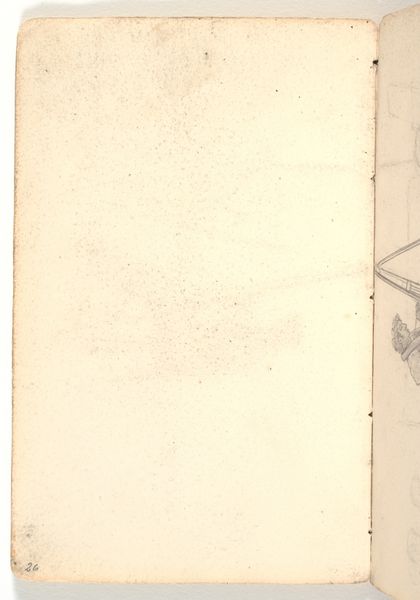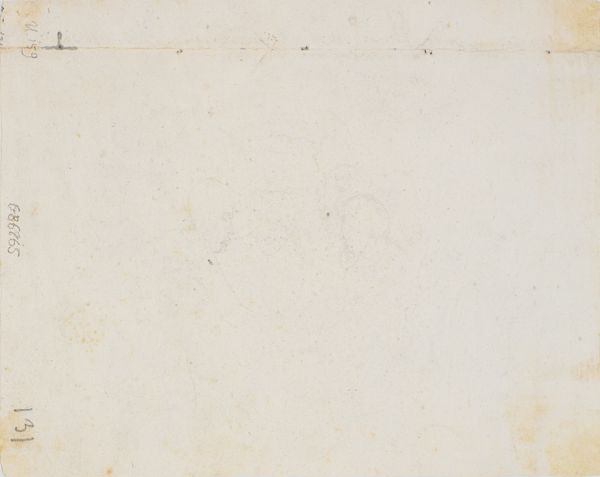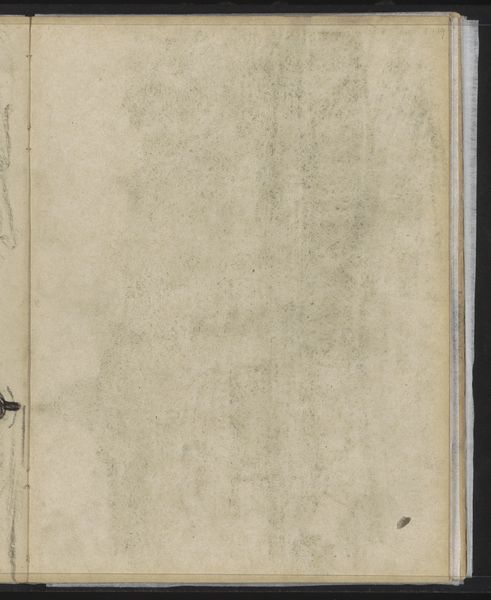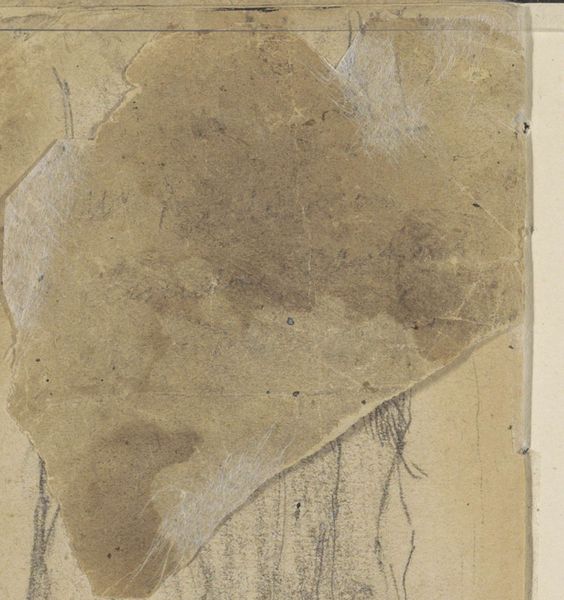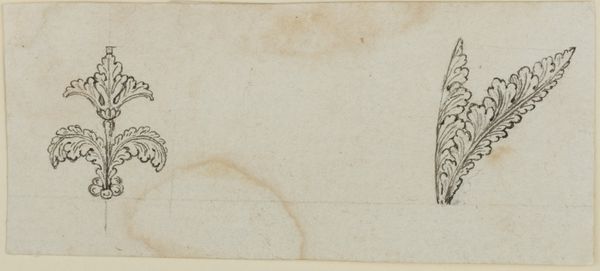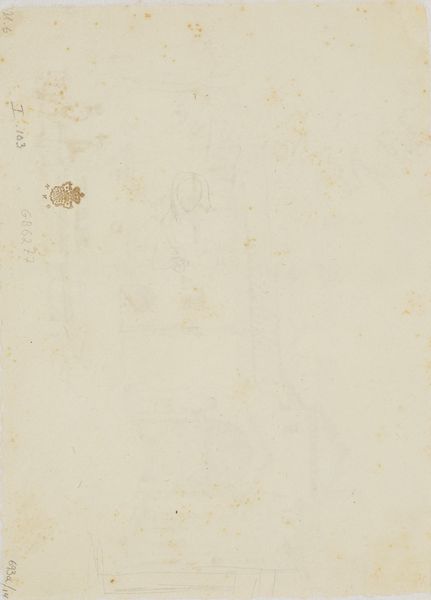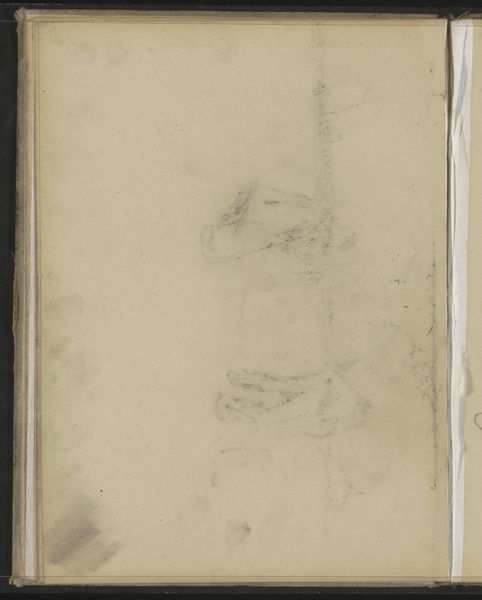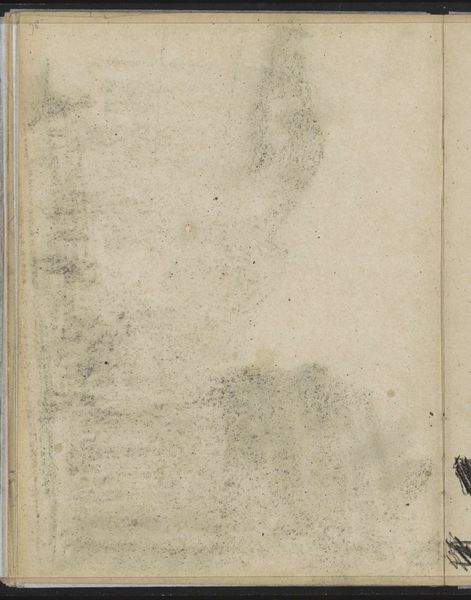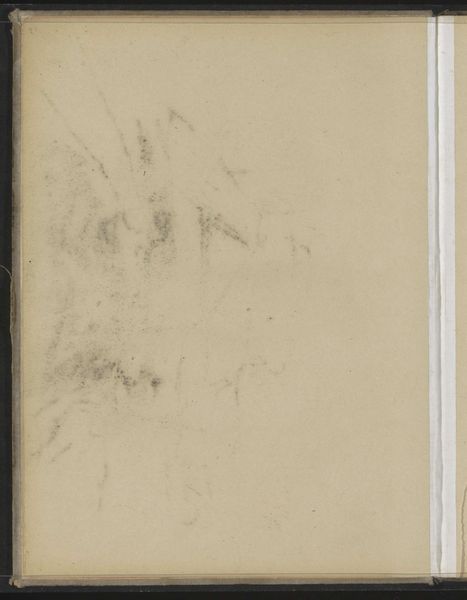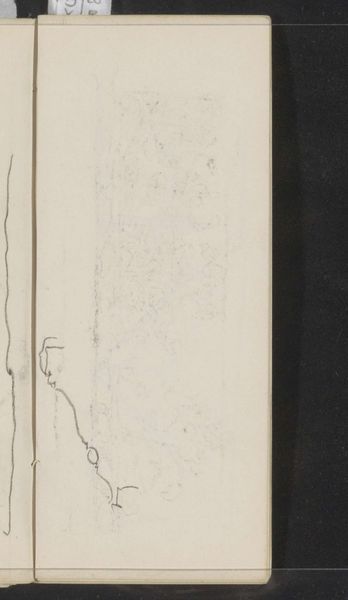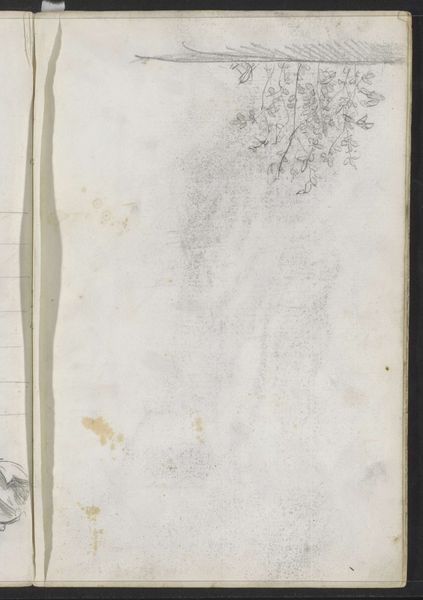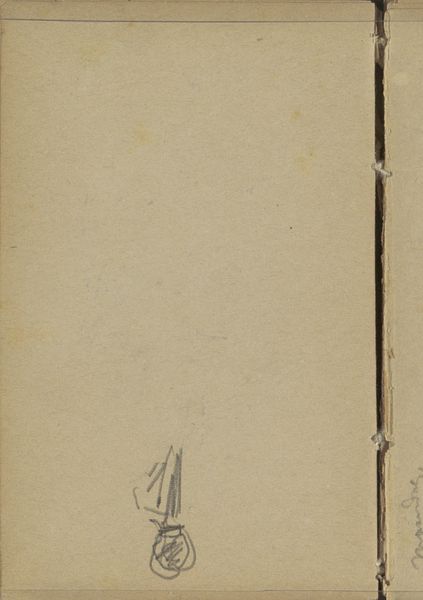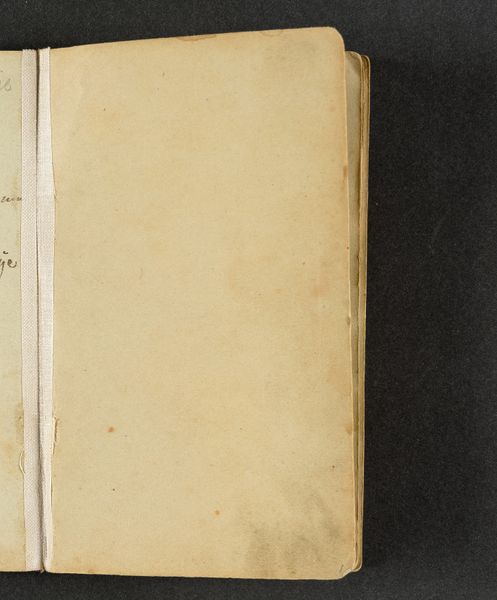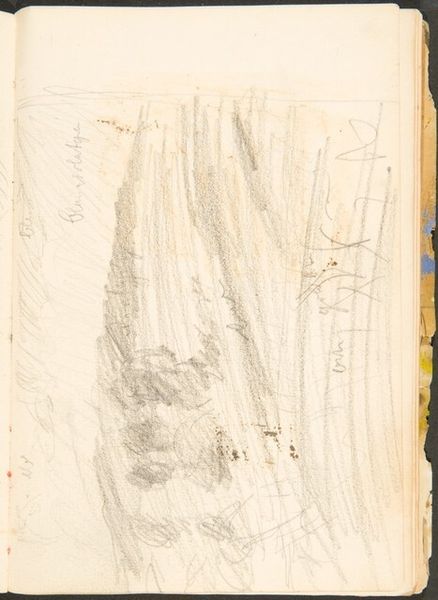
Copyright: Rijks Museum: Open Domain
Curator: I'm intrigued by this seemingly simple page from George Hendrik Breitner's sketchbook, titled "Annotatie," created in 1893. What do you make of it? Editor: Well, immediately, it evokes a sense of age, a patina acquired through time and handling. I'm curious about the materiality of the support—the kind of paper used. Curator: Breitner was, after all, deeply enmeshed in depicting Amsterdam and its people. Perhaps this unassuming annotation opens a door into understanding that era's scribbled notations? Editor: Precisely. The coloured-pencil marks, those notations themselves, they're not just information but physical gestures, records of labor and thought. What was the price and accessibility of the colored pencil in 1893 and how does this affect artistic access for the masses? Curator: The sketch is dated “1893." Could this imply some historical event that has impacted Breitner and society as a whole? The casual viewer may ignore the importance of a small annotation, not even considering the location of “Lauriergracht.” Editor: Agreed. It also raises a crucial point about Breitner's artistic process. Was he simply jotting down mundane details, or were these notations somehow intrinsic to his larger creative endeavors? What was his labor practice here? What was his creative schedule? Curator: Furthermore, this sketchbook page reflects the tension between private and public – the artist's personal notes now presented within the grand halls of the Rijksmuseum, ripe for public consumption and critique. It opens dialogues around class and access to this form of art as well. Editor: Yes! And look at the paper's discoloration—possibly water damage or stains. Those accidents of history add another layer of meaning. Each stain marks material conditions and possibly material costs. Curator: Ultimately, "Annotatie" acts as a poignant reminder that history isn't just found in grand narratives; it resides also in the simplest, most unadorned details of our lives and our labour. Editor: It invites us to consider the physical reality of artistic creation, and the way materials shape, and are shaped by, both the artist and the world around them. What kind of manual labor has been lost with new innovations such as digital software?
Comments
No comments
Be the first to comment and join the conversation on the ultimate creative platform.
